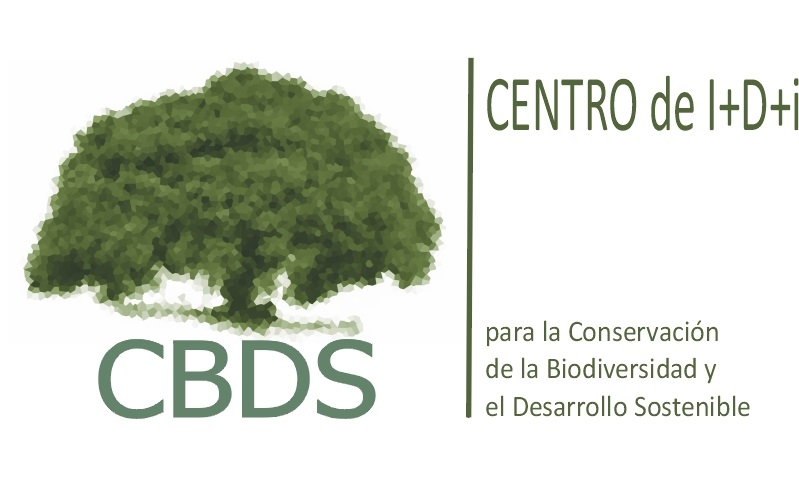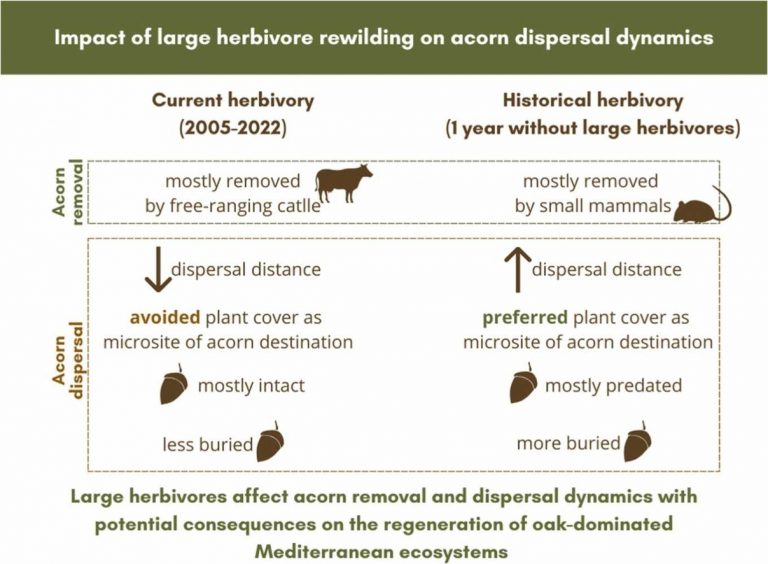Autores: Rossa M, Leite P, Linck P, Moreira G, Mausberg N, Fernandes J, Severino P, Duarte J, Maia P, Torres R, Carvalho J, Perea R.
Publicación: Global Ecology and Conservation. 2025
Enlace DOI: https://doi.org/10.1016/j.gecco.2025.e03655
Resumen: Large herbivores drive ecosystem functions and processes through their direct or indirect impact on different habitats and wildlife communities. Some studies have assessed the impact of large herbivores on the small mammal diversity and abundance, but fewer have assessed how rewilding with large herbivores impact seed dispersal by rodents. Here, we assessed the impact of “Maronesa” cows, a cattle breed closely related to the extinct Aurochs (Bos primigenius), on acorn removal and dispersal dynamics in a typical Mediterranean habitat. This study was conducted in the Faia Brava Reserve located in the Greater Côa Valley (North-Eastern Portugal) as part of the Rewilding Europe program, where it was possible to distinguish three areas: 1) current “Maronesa” herbivory (since 2012), 2) historical herbivory (2012-2022), and 3) control area (i.e., without any records of large herbivores). Our results showed that acorn removal rates were significantly higher in areas with large ungulate herbivory (historical and current) than in the control area. Acorn removal in historical herbivory was caused only by scatter-hoarding rodents, whereas in current herbivory it was mainly caused by large herbivores that act as acorn predators. Interestingly, dispersal distances were greater in the historical herbivory compared to the current herbivory. Microsites of seed deposition also varied with large herbivore rewilding, as rodents dispersed the seeds to open microsites when large herbivores were present, whereas without herbivory, seeds were mostly deposited and predated under plant cover. These findings highlight the potential consequences of large herbivore rewilding on the regeneration of oak-dominated Mediterranean ecosystems through cascading effects on the seed dispersal process.


